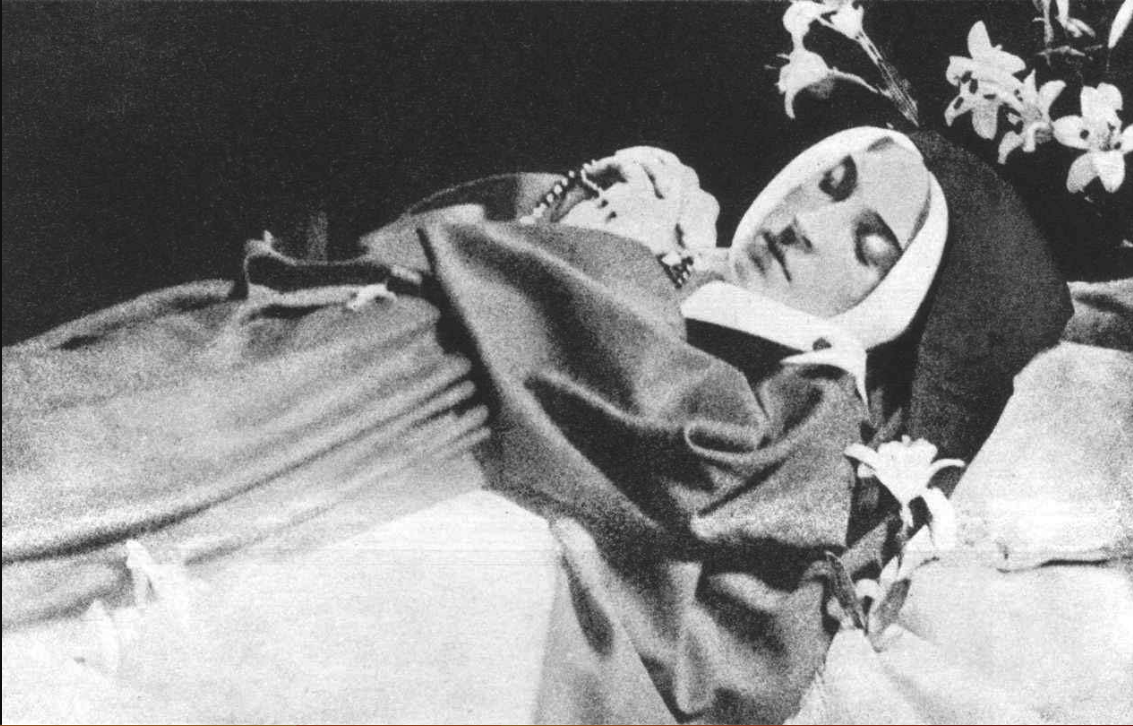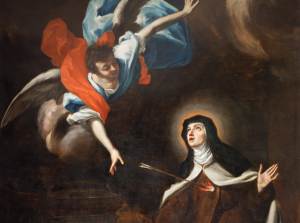
The Incorruptibles: Testimony to the Dignity of Our Bodies
March 13, 2024

We are almost finished with Lent this year. This past Sunday, Laetare Sunday, my pastor gave an interesting homily about joy. He tied it directly to how our Lenten duties of prayer, fasting and almsgiving are really sources of joy because they help temper the body. A body that isn’t indulged immediately and consistently is capable of joy because it isn’t a slave to whim. This got me thinking about how the saints were able, to temper their bodily appetites, without disdaining their bodies, by cooperating with God’s grace.
“Though made of body and soul, man is one” (GS 14). We are incarnate spirits, body-soul composites. As Pope St. Paul VI continues in Gaudium et Spes #14: “For this reason man is not allowed to despise his bodily life, rather he is obliged to regard his body as good and honorable since God has created it and will raise it up on the last day.”

We believe in the resurrection of the body. We will be “given back” our mortal body at the resurrection of the dead in a glorified and new state — a state no longer susceptible to corruption (CCC 999). This has been an essential element of the Christian faith from the beginning (CCC 991). Our bodies are important! How we use and treat them now matters. We can see evidence of this when we look at saints who are incorrupt.
An incorrupt body is one that has not undergone the natural process of deterioration and putrefaction after death. An incorruptible body is one that hasn’t undergone deterioration but should have considering its environment. Incorruptible bodies are almost always flexible, not brittle, and frequently the clothes worn at burial have decomposed. There are accounts of some bodies even having a pleasant, floral fragrance when exhumed. Not my first thought when imagining an unearthed corpse!
The fact that someone who has died has not decayed after an adequate length of time and without preservative interventions, like embalming or mummification, points us to the supernatural intervention of God. The Gospels clearly show us God’s direct intervention in the order of nature. Jesus displayed His power over nature by raising Lazarus four days after his death (Jn 11: 39-44) and rebuking the wind and rain while on the Sea of Galilee with the Apostles (Mk 4:39).
The Church doesn’t have an exact definition of what is considered incorrupt, but independently examines each case in concert with the person’s life of virtue and holiness. Solely being incorrupt is not a definitive sign of sanctity but is certainly considered during the process of canonization. After someone is declared a saint, the Church then discloses if their body is incorrupt and to what degree. To date, there are more than 250 incorrupt bodies of Catholic saints.

The incorrupt saints give witness to the fact that we will be raised to new life on the last day. Our bodies are not “meat cages” for our souls, and though subject to concupiscence by the Fall, they are not bad. The bodies of those holy men and women that have not suffered the full taste of death show us that our bodies are integrally important and good. Especially when a particular part of a saint’s body is miraculously preserved, such as St. Teresa of Avila’s heart (with which she experienced the “transverberation” or piercing by divine love) that even displays a physical wound! St. Anthony of Padua’s tongue was found incorrupt over 30 years after his death, receiving a divine “nod” confirming his God-given gift of preaching and teaching. Our Creator and Lord, in His unfathomable love for us tells us the truth of who we are, we just have to commit to listen to Him and pay attention.
The incorruptibility of many of the saints’ bodies is a sign of their participation in the eternal life and happiness of God, emphasizing the intrinsic value and dignity of the human body in the image of God (CCC 364). The incorruptible saints serve as a living example of how the body, when united with the soul in holiness, can share in the divine life and reflect the inherent goodness of God’s creation. Through their incorruptibility, these saints continue to inspire and lead others to recognize the holiness and sanctity of the human body, ultimately pointing towards the final resurrection and the fulfillment of God’s promise of eternal life.

With just about 2 weeks remaining this Lent, let’s commit to live in a way that gives glory to God in and through our bodies. As we approach Easter, we can start to live our resurrected lives physically, by using the gifts of fasting, prayer, and almsgiving now to temper our bodies like the saints did. With God’s grace, perhaps we can say with the words of the Psalmist, “you will not leave my soul to the netherworld, nor let your beloved know decay” (Ps 16:10).

Written by, Victoria O’Donnell
Sales & Implementation Specialist — Midwest
vodonnell@ruahwoods.org
*Header Image: Incorrupt body of Bernadette Soubirous, taken between after the last exhumation (April 18, 1925) and before being stored in the current urn (July 18, 1925). The saint died on April 16, 1879, 46 years before the photo.
Share